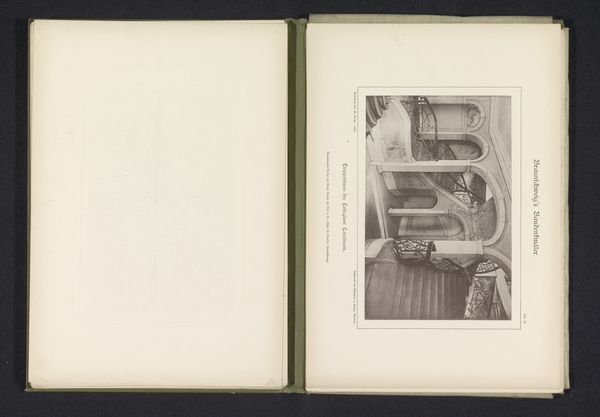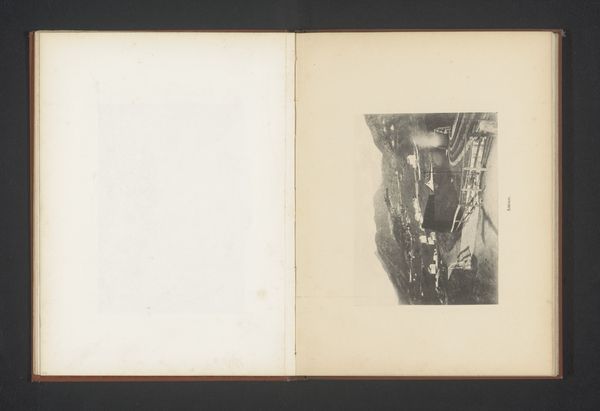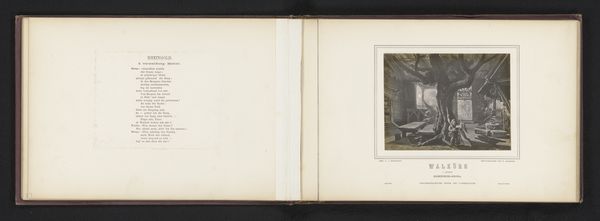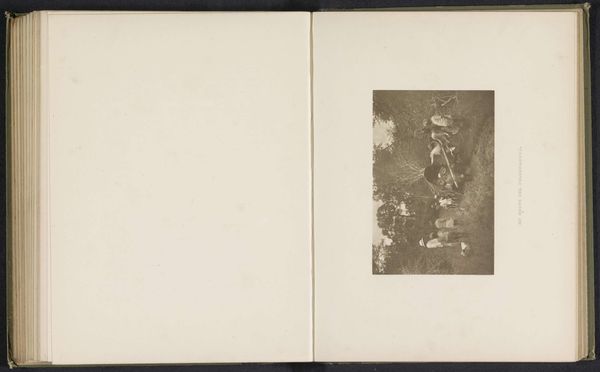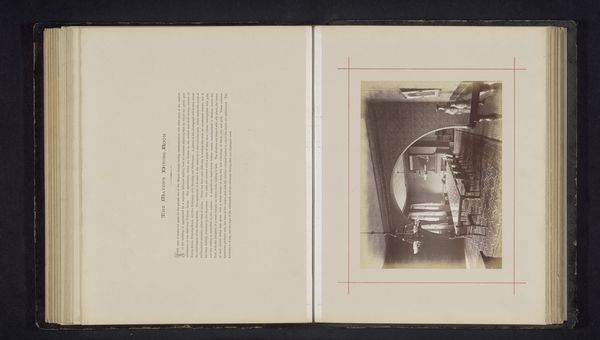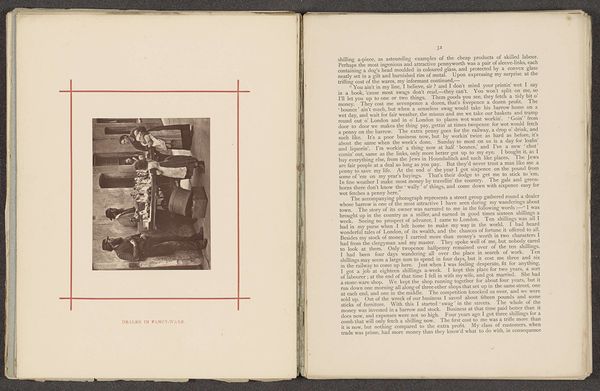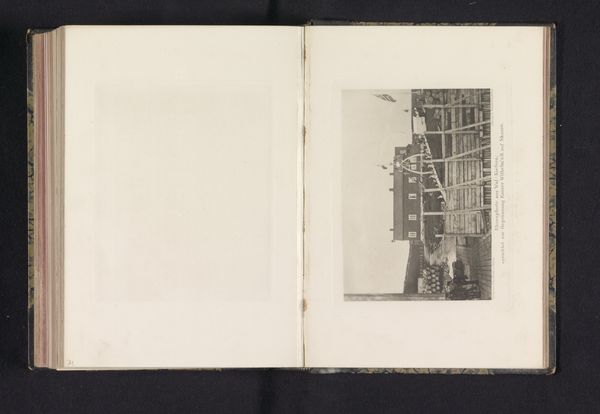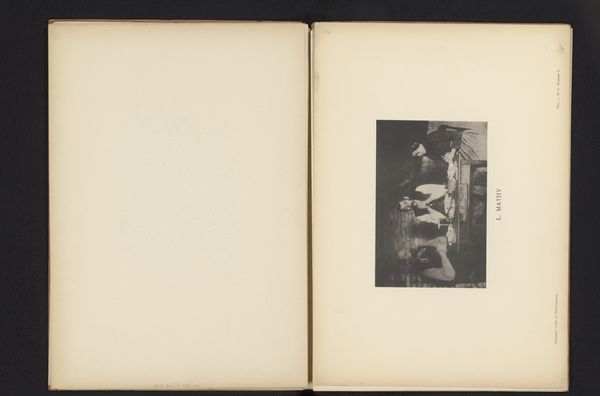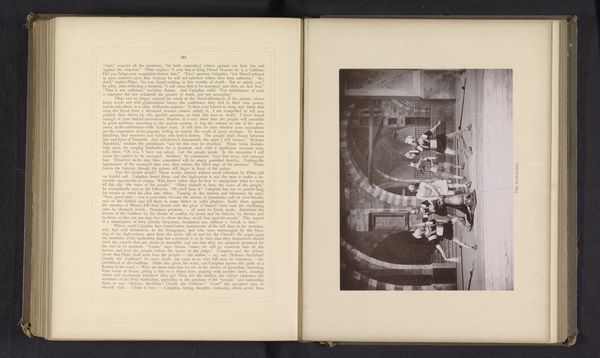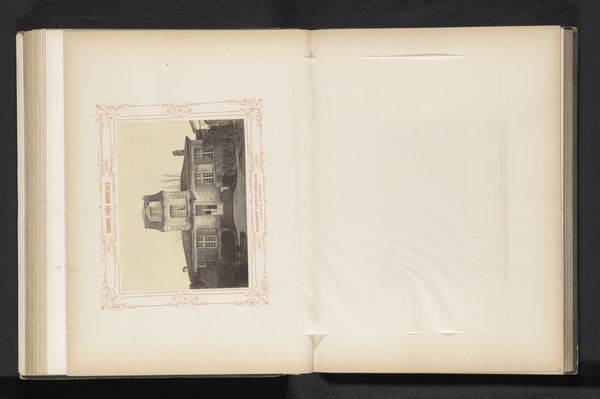
Fotoreproductie van een schilderij, voorstellende Maarten Luther verdedigt zijn stelling tijdens de Rijksdag van Worms c. 1875 - 1880
0:00
0:00
anonymous
Rijksmuseum
Dimensions: height 95 mm, width 121 mm
Copyright: Rijks Museum: Open Domain
Curator: Let's delve into this intriguing print from the late 19th century, sometime between 1875 and 1880. The work is titled 'Fotoreproductie van een schilderij, voorstellende Maarten Luther verdedigt zijn stelling tijdens de Rijksdag van Worms,' which translates to a photographic reproduction of a painting depicting Martin Luther defending his theses at the Diet of Worms. It resides here in the Rijksmuseum collection. Editor: Okay, immediately I feel like I’m squinting at a faded memory. It’s this grainy, sepia-toned tableau packed with figures – it has a powerful, solemn aura about it, almost operatic, like a freeze-frame from a very serious historical drama. A kind of hallowed history lesson frozen for the ages. Curator: It really captures the moment doesn't it? I'm interested in the social and religious implications. Consider the significance of Luther's defiance in the context of the Reformation and the shift in power dynamics between the Church and the individual. How does the visual representation of this event contribute to the construction of Luther as a heroic figure? Editor: Absolutely, he is positioned right in the heart of the scene. The dramatic lighting helps, doesn’t it? Really carves his figure out amongst this sea of onlookers. This photograph, though, removes an additional layer - a photograph *of* a painting! I'm now intrigued by how an artistic representation of an event gets copied and then recodified to cement Luther's image. The emotional impact remains surprisingly potent. Curator: Exactly! Photography served to disseminate and solidify particular historical narratives and interpretations. The use of both realism and romanticism suggests a desire to accurately depict the event but also imbue it with a sense of grandeur and importance, don’t you think? Consider its place within wider narratives of religious and political identity. Editor: True. It makes me wonder what Luther himself would have thought of all this… all of these representational layers… this slightly blurry, venerating afterlife we’ve built around him. And perhaps more generally… is it possible for photography to offer genuine testimony, or will it always be mediated, mediated and more mediated again? Curator: It certainly prompts a moment of consideration. And given all this, the importance of reflecting upon how images like these shape our collective memory is thrown into stark relief. Editor: It does, doesn’t it? And to think, this one small page tucked away in a book contains such layers of questions! I wonder if anyone else thinks it smells vaguely of incense when they look at it? Just me?
Comments
No comments
Be the first to comment and join the conversation on the ultimate creative platform.
